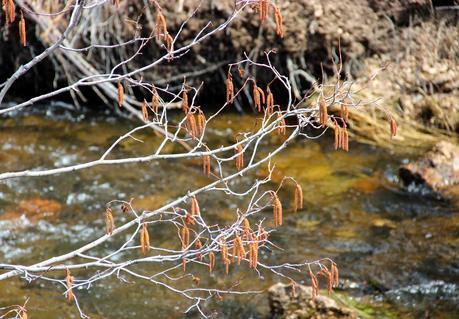 We were hiking in Curt Gowdy State Park a few weeks ago when we met two leafless trees standing by a creek. “Are you an alder or a birch?” I asked the first (above). There was no reply. I posed the same question of the second (below), with the same result. Both stood silently except for an occasional whisper of branchlets in the wind.
We were hiking in Curt Gowdy State Park a few weeks ago when we met two leafless trees standing by a creek. “Are you an alder or a birch?” I asked the first (above). There was no reply. I posed the same question of the second (below), with the same result. Both stood silently except for an occasional whisper of branchlets in the wind.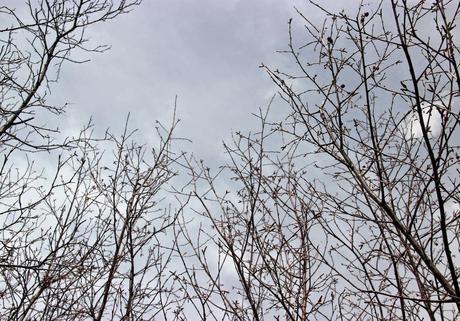 It was a valid question. Alders and birches are both in the birch family (Betulaceae). You might say they’re cousins -- different genera, with alders in the genus Alnus and birches in Betula. They’re enough alike to be confusing, especially when they don’t have leaves. I was pretty sure one of these trees was an alder and the other a birch, and I was hoping there was an easy way to tell them apart this time of year. I looked into it when I got home and found it’s not as simple as I had hoped. But it’s not that hard either.
It was a valid question. Alders and birches are both in the birch family (Betulaceae). You might say they’re cousins -- different genera, with alders in the genus Alnus and birches in Betula. They’re enough alike to be confusing, especially when they don’t have leaves. I was pretty sure one of these trees was an alder and the other a birch, and I was hoping there was an easy way to tell them apart this time of year. I looked into it when I got home and found it’s not as simple as I had hoped. But it’s not that hard either.Both alders and birches are said to have smooth bark, but this is a little misleading. I think the authorities mean they don’t have furrowed bark. Many species of alder and birch have prominent lenticels -- prominent enough that the bark isn’t all that smooth.
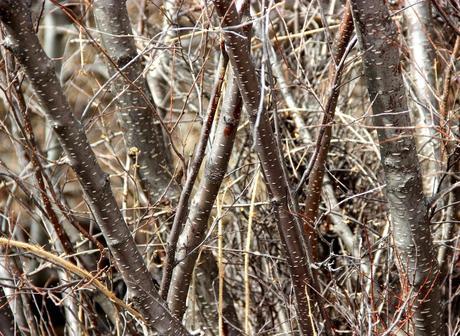
Lenticels are pores allowing gas exchange through bark. This is Tree #2.
Alders and birches both have separate male and female catkins (flower clusters), with the two sexes on the same tree (monoecious). Fortunately their female catkins differ, and therein lies a way to tell the cousins apart.Tree #1 was dominated by male catkins ... the guys were in full bloom!
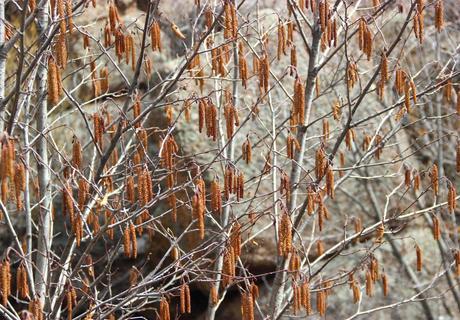
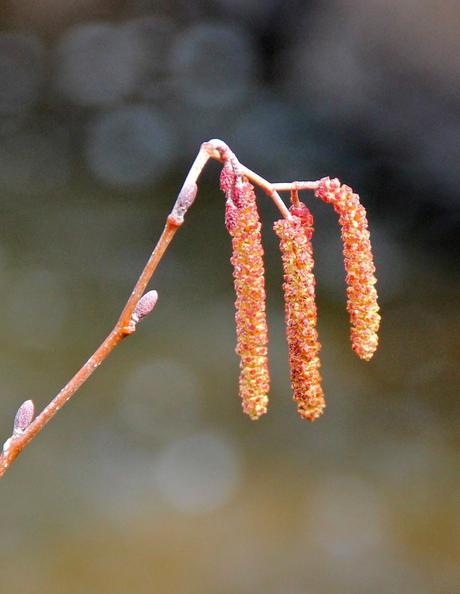
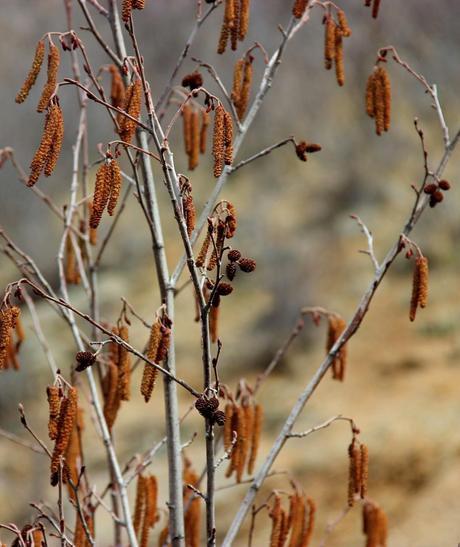
Darker woody "cones" are last year's female catkins.
Tree #2 had lots of catkins as well. The male ones were immature -- still hadn’t opened.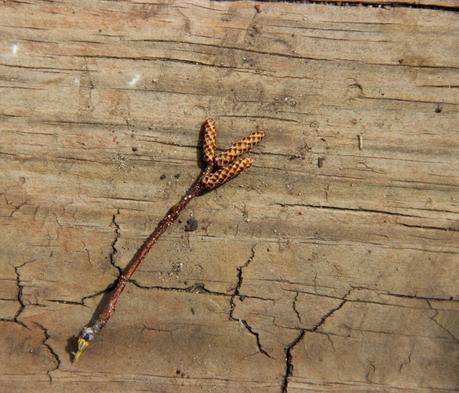
Young male catkins, roughly an inch long.
High on the tree were scattered female catkins from last year. Their papery bracts gave them away. These are birch cones. They’ll soon fall apart and be gone.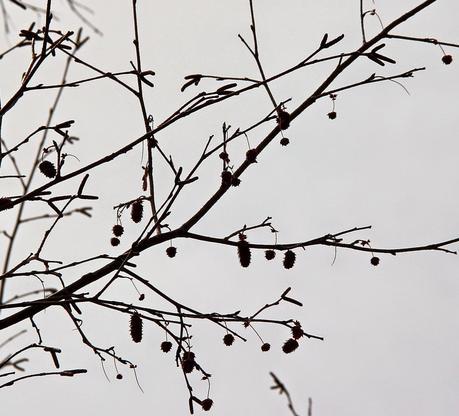
Tree #2 is a birch, with pendulous papery-bracted female "cones" (click on image to view).
In the field I used my Rocky Mountain Tree Finder to key out the two trees. They are the mountain or thin-leaved alder (Alnus incana var. tenuifolia), and the water birch (Betula occidentalis). Both are fairly common along streams in Wyoming.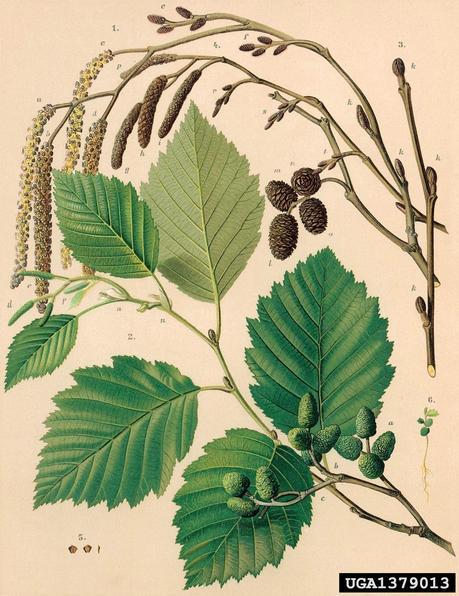
Mountain alder (Tree #1); courtesy Zelimir Borzan, University Zagreb, Bugwood.org
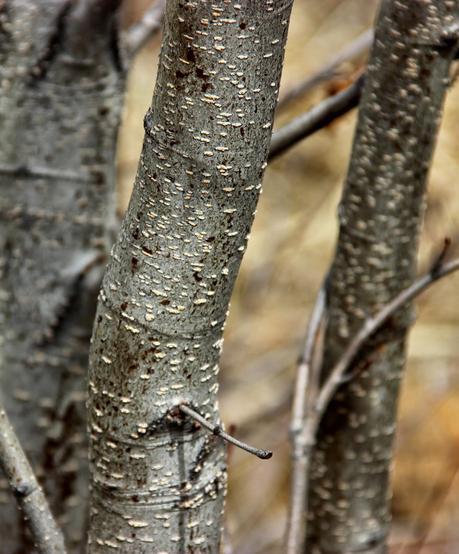
Mountain alder is sometimes called speckled alder, I suspect for the prominent lenticels.
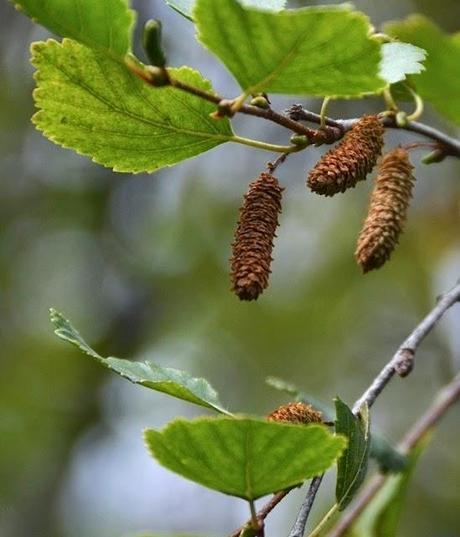
Water birch (Tree #2) in its prime, with mature female catkins. UFEI, Cal Poly San Luis Obispo

The bark of water birch sometimes is a pretty red, contrasting nicely with the lenticels.
At the base of the water birch we found an old leaf. It helped with identification.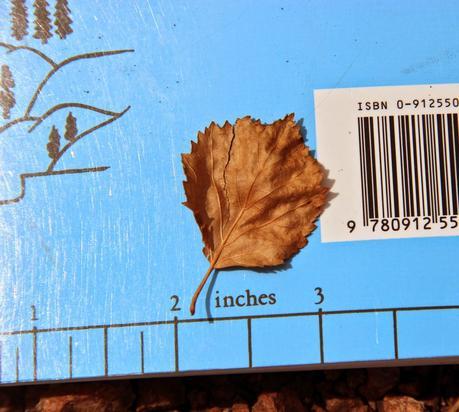
These trees became the first observations in the newly-launched iNaturalist project Plants of the Southern Laramie Mountains.
